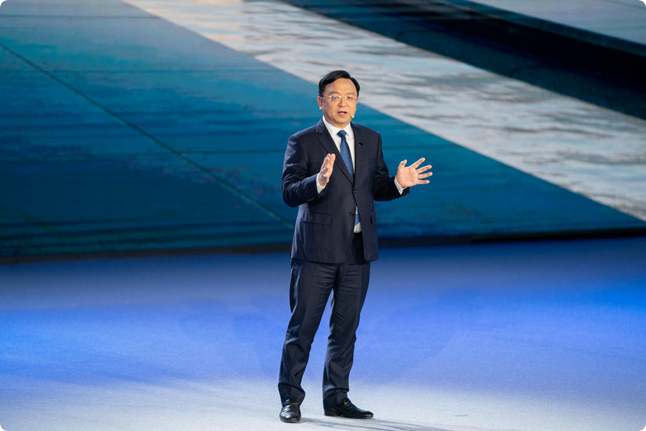Discover the essential attributes of the ideal laptop in our comprehensive buyer's guide. Learn about key factors like performance, storage, display quality, battery life, build quality, and connectivity to make an informed purchase that meets your needs and enhances productivity. Explore now to find your perfect laptop match!
Introduction
The selection of an appropriate laptop is a significant and rather important process in the modern world that is more or less dependent on the use of computers and their analogues. The dream laptop is not merely a necessity but a worthy appendage that augments one’s capacity to work, create, and interconnect.
They are numerous and due to that, the decision on which one to use for a particular purpose may be extremely difficult due to the special features that define each of the options. But at the same time, it is crucial to know what parameters have a significant impact on a laptop’s performance and its decision-making criteria to enhance the choice and bring the result oriented to certain requirements only.
The technological growth is always advancing and this applies to laptops as well; new models are being developed with special features that guarantee the users with faster and efficient laptops. Modern laptops covers a wide range of specifications, from the superior performing processors and huge storage options up to outstanding display quality and long-lasting battery life.
It is against this background that this guide seeks to simplify the basic characteristics of the best laptops so that you obtain an understanding that will enable you to venture into the market for laptop-shopping with some measure of sophistication.
Performance and Processing Power
Any laptop’s performance lies in two of its significant components, often referred to as the CPU also known as Central Processing Unit, and the RAM commonly known as Random Access Memory. CPU essentially determines the main processing and calculations, and therefore, it’s highly advisable to select a computer processor with the usage characteristics in mind.
For instance Intel Core i5 and i7 and AMD Ryzen 5 and 7 provide relatively strong performance for many people and powerful efficiency for a variety of tasks from web browsing to running highly demanding software. For users involved in tasks like video editing, 3d modeling or gaming, it is advisable to get processors from Intel’s Core i9 or AMD’s Ryzen 9 series at least because such operations-demanding applications will be able to run on this class calm and unhurried.
The amount of RAM is also closely related to the laptop’s performance, specifically its capacity to handle multiple and computational, cache-intensive tasks simultaneously. For regular use, which includes browsing the internet, using office applications, watching movies and shows, 8 Gigs of RAM is enough.
But for designers of the multitasking interfaces, it becomes very hard to understand the object from the view of the user who is continuously multitasking or if you are involved with software consuming plenty of RAM, getting the 16GB or even 32GB RAM can greatly boost the efficiency and fluency of the product. Hence, when considering these aspects you are likely to get a laptop that will meet your anticipated performance and productivity rates.
Storage Options and Requirements
The type, size as well as the location of storage in a laptop have fundamental impacts towards the functionality as well as efficiency of a laptop. In the past, laptops’ storage choices have been based on Hard Disk Drives; products that combine large storage, for less money. However, due to the various reasons including speed, efficiency, and energy consumption, Solid State Drive (SSDs) are famous. SSDs use flash memory to read/write data which makes booting up the computer faster, data transferring faster and the general performance of the computer faster. This can be a great plus to your operations especially if you deal with large files or with programs that demand too many read and write operations.
Regarding the storage capacity, one needs to proportionate it to the specific load. Laptop users who do not heavily rely on their laptops or push it to the limit such as web browsers, streaming, and document editing may be fine with 256GB SSD. For the working professionals who deal with huge amount of data, especially photographers, videographers or software developers, it will bevert wise to go for a large SSD like 512GB or 1TB to be able to contain applications, projects and media files. Also, it is possible to have a mixture of both SSD and HDD storage types in laptops to allow he user to choose which one the gadget ought to utilize, the faster SSD or the large capacity HDD.
Display Quality and Size
The screen is the part that stands out when it comes to a laptop and is one of the elements that determines your interaction with the instrument. Resolution of 1920×1080 or 3840×2160 makes texts and objects displayed on monitors perfectly visible, which increases working and even recreational efficiency.
The final decision about the resolution should depend on your activities;for instance, employees who work in graphic design, video editing, or any similar field will work better with a higher resolution since it improves picture quality as well as color differentiation. Furthermore, the type of the display panel such as IPS (In-Plane Switching) or OLED (Organic Light-Emitting Diode) impact on the quality of displayed visuals are phenomenal where IPS panel provide better color reproduction and viewing angles than OLED. Panels offer better contrast ratio and colors are punchier.
Screen size is another essential aspect that determines the laptop’s operability as well as compactness. Screens on these laptops are generally not larger than 14 inches; the most common sizes are between 11 and 14 inches, which makes these laptops compact, and thus, portable for users with many traveling needs.
15 or 17-inch laptops are even more useful because of the increased screen space that is very convenient for use with various applications at once or for watching movies, but at the same time, they are less portable due to the increased weight and size. Moreover, there can be such aspects as a touch screen and a high refresh rate which can be beneficial when you are gaming and will enhance the usability and the touch of the device.
Battery Life and Portability
Another factor that is of paramount concern to the users especially the ones who need to move from one place to the other is the battery life. The portability of a laptop depends on a battery level and depends on the efficiency of the different components within the laptop, size of the screen or resolution of it, and the type of applications that are being used by the laptop.
Laptops with efficient microprocessors together with SSD Drives mostly have longer battery life. Ultrabooks as the laptops with thin form factor, considerable battery life are perfect for users who have to work at different locations, like business people, students. A laptop with the battery lasting a full day of use is very useful, and convenient hence with a battery lasting a full day, productivity is boosted among those who travel or work from home.
Portability is also essential, especially for a user who has to transport the laptop frequently. The weight and the size of the laptop affect whether or not it is convenient to transport the laptop with you. Ultrabooks and thin-and-light laptops, primarily weighing between 2 to 4 pounds, meets the aspects of both class and fervor.
However, this at no instance should come at the cost of losing the some core factors and durability in an attempt to get a lighter laptop. This means that while looking for a device one has to balance the needs in terms of performance with that of portability so that wherever the person is, he or she can be productive and connected.
Build Quality and Design
The physical quality of parts put in developing a laptop tells a lot about the device’s life expectation. Laptops that are genuinely made of metals like aluminum or magnesium alloy are considered to be more durable and capable of enduring the common strains of an average consumer than the plastic-made ones.
This accounts for a compact and durable construction as it provides a shield to the internal aspects but also contributes to get a more luxurious structure into the basic components. Also, a well-designed hinge with strong construction is also less likely to deteriorate with time and the laptop’s exterior is also more likely to look as new for a longer time.
It is also worth mentioning that the role of design in the formation of the overall concept of the unique user experience cannot be overestimated. Comfortable keyboard with decent key travel, responsive and precise touchpad, along with good thermal solutions are among the ergonomic improvements that can defy usability.
Thus, colour, finish, design of the laptops have a part to play in the perception of user satisfaction and meet consumer needs. These may not be profound, but a nice looking working laptop puts a smile on your face every time you open and use it.
Connectivity and Ports
When it comes to today’s global village, having a laptop with sufficient connectivity capabilities is compulsory. The type and number of sockets on the laptop define the connectivity of the laptop to different peripheral and other apparatuses. USB type C ports are also slowly becoming the norm and are preferred due to their multi functionality in terms of data, power and video transfers.
HDMI ports are crucial for connecting to another display or projector whereas USB-A ports will still be employed for backward compatibility. Moreover, an SD card reader could prove useful to photographers and videographers who have to transfer photos and videos from their cameras often.
Connectivity is not limited to the physical ports as the wireless functionality is also included here. Stable internet connection through the WI-FI feature is important for proper connectivity; Bluetooth facilitates connection with wireless input devices like the headphones, mouse among others.
In this regard, making sure that your laptop has support for the current connectivity formulations increases its useful life since you can plug it into new protocols as they surface in the market.
Conclusion
When choosing a laptop, it is vital to see how each attribute is relevant to the specific user and their wants. When it comes to purchasing a computer, five critical features to consider are performance, storage, display quality, battery life, the build quality, and connectivity options; by taking these into account you have made the right purchase that will stand the test of time.
Each aspect contributes to the over functionality of the hand-held device, and how friendly the hand-held device is to the user; the act of coming up with the over functionality of the hand-held device cautions each feature against your budget to give you the best value.
Ultimately, the key to making an informed decision lies in thorough research and comparison. Take the time to read reviews, compare specifications, and test devices in person if possible. This due diligence will ensure that you choose a laptop that not only meets your current needs but is also capable of adapting to future demands.
By prioritizing your requirements and preferences, you can invest in a laptop that enhances your productivity, creativity, and enjoyment, making it a valuable tool in your daily life.


























